Items filtered by date: July 2025
Facts About Bunion Surgery
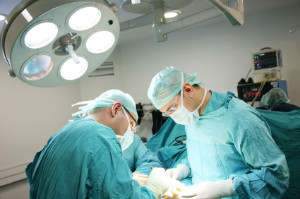
Bunion surgery is a corrective procedure used to realign the bones and soft tissue surrounding the big toe joint when a bunion causes pain or interferes with daily activities. It may be recommended when non-surgical treatments no longer relieve discomfort or when the bunion worsens over time. The procedure involves removing the bony bump and adjusting the affected joint to restore normal alignment. Common reasons to have bunion surgery include chronic pain, swelling, difficulty wearing shoes, and reduced mobility. A podiatrist will evaluate your foot, discuss options, and guide your recovery for the best outcome. If bunion pain affects your quality of life, it is suggested that you consult a podiatrist to see if surgery is the right solution for you.
Foot surgery is sometimes necessary to treat a foot ailment. To learn more, contact Gabrielle Clark, DPM of LA Feet Foot & Ankle Center, Inc. Our doctor will assist you with all of your foot and ankle needs.
When Is Surgery Necessary?
Foot and ankle surgery is generally reserved for cases in which less invasive, conservative procedures have failed to alleviate the problem. Some of the cases in which surgery may be necessary include:
- Removing foot deformities like bunions and bone spurs
- Severe arthritis that has caused bone issues
- Cosmetic reconstruction
What Types of Surgery Are There?
The type of surgery you receive will depend on the nature of the problem you have. Some of the possible surgeries include:
- Bunionectomy for painful bunions
- Surgical fusion for realignment of bones
- Neuropathy decompression surgery to treat nerve damage
Benefits of Surgery
Although surgery is usually a last resort, it can provide more complete pain relief compared to non-surgical methods and may allow you to finally resume full activity.
Surgical techniques have also become increasingly sophisticated. Techniques like endoscopic surgery allow for smaller incisions and faster recovery times.
If you have any questions, please feel free to contact our offices located in New Orleans, and Metairie, LA . We offer the newest diagnostic and treatment technologies for all your foot care needs.
How a Podiatrist Can Help Conquer Athlete’s Foot
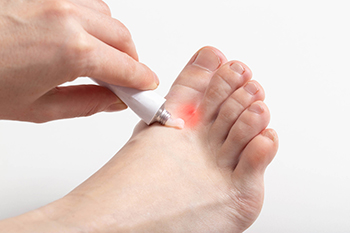
Athlete’s foot is a common fungal infection that affects the skin on the feet, often appearing between the toes. It is caused by fungi that thrive in warm, moist environments such as locker rooms, showers, or sweaty footwear. Symptoms include itching, burning, redness, peeling, and cracked skin. Risk factors include wearing tight shoes, poor foot hygiene, and frequenting public places barefoot. A podiatrist can diagnose the condition, recommend antifungal treatments, and offer guidance to prevent recurrence. Proper foot care and early treatment are key to avoiding complications or spreading the infection. If you notice persistent foot irritation or signs of athlete’s foot, it is suggested that you visit a podiatrist for effective care and lasting relief.
Athlete’s Foot
Athlete’s foot is often an uncomfortable condition to experience. Thankfully, podiatrists specialize in treating athlete’s foot and offer the best treatment options. If you have any questions about athlete’s foot, consult with Gabrielle Clark, DPM from LA Feet Foot & Ankle Center, Inc. Our doctor will assess your condition and provide you with quality treatment.
What Is Athlete’s Foot?
Tinea pedis, more commonly known as athlete’s foot, is a non-serious and common fungal infection of the foot. Athlete’s foot is contagious and can be contracted by touching someone who has it or infected surfaces. The most common places contaminated by it are public showers, locker rooms, and swimming pools. Once contracted, it grows on feet that are left inside moist, dark, and warm shoes and socks.
Prevention
The most effective ways to prevent athlete’s foot include:
- Thoroughly washing and drying feet
- Avoid going barefoot in locker rooms and public showers
- Using shower shoes in public showers
- Wearing socks that allow the feet to breathe
- Changing socks and shoes frequently if you sweat a lot
Symptoms
Athlete’s foot initially occurs as a rash between the toes. However, if left undiagnosed, it can spread to the sides and bottom of the feet, toenails, and if touched by hand, the hands themselves. Symptoms include:
- Redness
- Burning
- Itching
- Scaly and peeling skin
Diagnosis and Treatment
Diagnosis is quick and easy. Skin samples will be taken and either viewed under a microscope or sent to a lab for testing. Sometimes, a podiatrist can diagnose it based on simply looking at it. Once confirmed, treatment options include oral and topical antifungal medications.
If you have any questions, please feel free to contact our offices located in New Orleans, and Metairie, LA . We offer the newest diagnostic and treatment technologies for all your foot care needs.
Causes of Ankle Impingement Pain
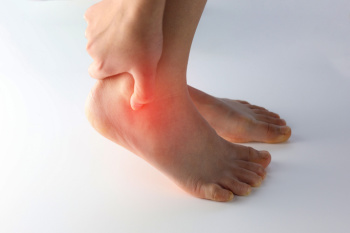
Ankle impingement pain happens when something inside the ankle joint gets pinched during movement. This usually affects people who play sports that involve a lot of jumping, running, or kicking, like soccer or ballet. Pain in the front of the ankle can occur when the foot is pushed upward, and pain in the back can happen when the foot is pointed downward. Repeated ankle sprains or injuries can lead to swelling, scar tissue, or extra bone growth, which can crowd the joint and make movement painful. Some people may feel a sharp pain, locking, or stiffness when they bend or twist the ankle a certain way. A small extra bone in the back of the ankle, called the os trigonum, can also cause pain when it gets squeezed. A podiatrist can evaluate the source of the ankle pain, confirm the diagnosis with imaging, if needed, and offer proper treatment, including surgery. If you are experiencing ankle pain, it is suggested that you schedule an appointment with a podiatrist for a diagnosis and appropriate treatment.
Ankle pain can be caused by a number of problems and may be potentially serious. If you have ankle pain, consult with Gabrielle Clark, DPM from LA Feet Foot & Ankle Center, Inc. Our doctor will assess your condition and provide you with quality foot and ankle treatment.
Ankle pain is any condition that causes pain in the ankle. Due to the fact that the ankle consists of tendons, muscles, bones, and ligaments, ankle pain can come from a number of different conditions.
Causes
The most common causes of ankle pain include:
- Types of arthritis (rheumatoid, osteoarthritis, and gout)
- Ankle sprains
- Broken ankles
- Achilles tendonitis
- Achilles tendon rupture
- Stress fractures
- Bursitis
- Tarsal tunnel syndrome
- Plantar fasciitis
Symptoms
Symptoms of ankle injury vary based upon the condition. Pain may include general pain and discomfort, swelling, aching, redness, bruising, burning or stabbing sensations, and/or loss of sensation.
Diagnosis
Due to the wide variety of potential causes of ankle pain, podiatrists will utilize a number of different methods to properly diagnose ankle pain. This can include asking for personal and family medical histories and of any recent injuries. Further diagnosis may include sensation tests, a physical examination, and potentially x-rays or other imaging tests.
Treatment
Just as the range of causes varies widely, so do treatments. Some more common treatments are rest, ice packs, keeping pressure off the foot, orthotics and braces, medication for inflammation and pain, and surgery.
If you have any questions please feel free to contact our offices located in New Orleans, and Metairie, LA . We offer the newest diagnostic tools and technology to treat your foot and ankle needs.
Causes and Symptoms of Poor Circulation in the Feet
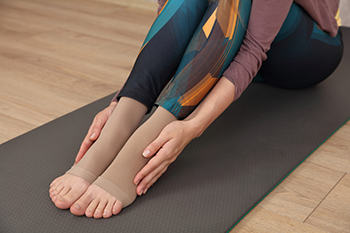
Poor circulation in the feet occurs when blood flow is restricted, often leading to discomfort, numbness, or a cold feeling. Causes include peripheral artery disease, diabetes, smoking, and a sedentary lifestyle. Risk factors include high blood pressure, high cholesterol, and obesity. Symptoms of poor circulation include tingling in the feet and toes, swelling, discoloration, or slow-healing wounds. These signs should not be ignored, as they may indicate more serious health conditions. A podiatrist can evaluate circulation, perform diagnostic tests, and recommend treatments such as compression therapy and lifestyle changes. If you experience persistent foot discomfort or signs of poor circulation, it is suggested that you consult a podiatrist for a thorough evaluation and personalized care plan to improve your foot health and overall well-being.
While poor circulation itself isn’t a condition; it is a symptom of another underlying health condition you may have. If you have any concerns with poor circulation in your feet contact Gabrielle Clark, DPM of LA Feet Foot & Ankle Center, Inc. Our doctor will treat your foot and ankle needs.
Poor Circulation in the Feet
Peripheral artery disease (PAD) can potentially lead to poor circulation in the lower extremities. PAD is a condition that causes the blood vessels and arteries to narrow. In a linked condition called atherosclerosis, the arteries stiffen up due to a buildup of plaque in the arteries and blood vessels. These two conditions can cause a decrease in the amount of blood that flows to your extremities, therefore resulting in pain.
Symptoms
Some of the most common symptoms of poor circulation are:
- Numbness
- Tingling
- Throbbing or stinging pain in limbs
- Pain
- Muscle Cramps
Treatment for poor circulation often depends on the underlying condition that causes it. Methods for treatment may include insulin for diabetes, special exercise programs, surgery for varicose veins, or compression socks for swollen legs.
As always, see a podiatrist as he or she will assist in finding a regimen that suits you. A podiatrist can also prescribe you any needed medication.
If you have any questions, please feel free to contact our offices located in New Orleans, and Metairie, LA . We offer the newest diagnostic and treatment technologies for all your foot care needs.
Get Professional Care for a Broken Foot or Ankle
Managing Flat Feet
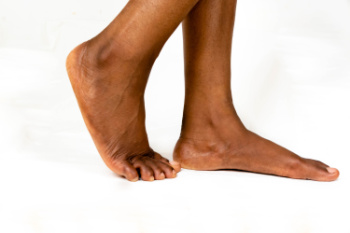
Flat feet or pes planus, occur when the arches of the feet collapse, causing the entire sole to touch the ground. This condition can be congenital or develop over time due to factors like injury, arthritis, obesity, or muscle weakness. Symptoms include foot pain, swelling along the inside of the ankle, and difficulty standing on tiptoes. Flat feet may cause uneven wear on shoes and lead to knee, hip, or back pain due to altered gait. Visually, flat feet appear as a lowered or absent arch when standing. Some people experience fatigue or discomfort after prolonged activity. A podiatrist can diagnose flat feet through physical examination and imaging studies. Treatment often involves custom orthotics to support the arch, stretching exercises, wearing proper footwear, and, in rare cases, surgery. If you have flat feet, it is suggested that you schedule an appointment with a podiatrist for evaluation and appropirate treatment.
Flatfoot is a condition many people suffer from. If you have flat feet, contact Gabrielle Clark, DPM from LA Feet Foot & Ankle Center, Inc. Our doctor will treat your foot and ankle needs.
What Are Flat Feet?
Flatfoot is a condition in which the arch of the foot is depressed and the sole of the foot is almost completely in contact with the ground. About 20-30% of the population generally has flat feet because their arches never formed during growth.
Conditions & Problems:
Having flat feet makes it difficult to run or walk because of the stress placed on the ankles.
Alignment – The general alignment of your legs can be disrupted, because the ankles move inward which can cause major discomfort.
Knees – If you have complications with your knees, flat feet can be a contributor to arthritis in that area.
Symptoms
- Pain around the heel or arch area
- Trouble standing on the tip toe
- Swelling around the inside of the ankle
- Flat look to one or both feet
- Having your shoes feel uneven when worn
Treatment
If you are experiencing pain and stress on the foot you may weaken the posterior tibial tendon, which runs around the inside of the ankle.
If you have any questions, please feel free to contact our offices located in New Orleans, and Metairie, LA . We offer the newest diagnostic and treatment technologies for all your foot care needs.

